We offer medical detox and multiple addiction treatment options in our
luxury treatment centres in Port Hope, Cobourg, and Ottawa.
Internet Addiction: Signs, Symptoms, and Treatment
Internet addiction affects millions worldwide, though most people struggle to recognize when their online behaviour crosses from routine use into problematic territory. The screen time that once seemed innocent gradually consumes hours, relationships, and peace of mind. Recognizing the warning signs early makes all the difference between manageable habits and life-altering dependency.

Key Takeaways:
- The brain chemistry changes: Internet stimulation triggers dopamine floods similar to substance addiction—but most people don't realize they're developing reward pathways that demand increasingly more screen time.
- Three symptom categories reveal the truth: Behavioural signs appear first (staying online longer than intended, lying about usage), followed by physical effects (sleep disruption, eye strain), then psychological indicators (anxiety when offline, mood swings tied to online experiences).
- Certain people face dramatically higher risk: Young adults aged 18-29, individuals with ADHD or mental health conditions, those experiencing loneliness, and trauma survivors show significantly elevated vulnerability rates.
- Multiple treatment paths exist: From cognitive behavioural therapy (70-80% improvement rates) to digital detox programs and gradual reduction strategies—but knowing which approach fits your situation makes recovery more likely.
- Prevention beats treatment: Simple daily habits like technology-free zones, mindful internet use, and building offline relationships can stop problematic internet use before it starts.
What Defines Internet Addiction?
Compulsive internet use becomes an internet disorder addiction when online activities interfere with daily functioning. Unlike casual browsing or work-related computer use, this condition involves losing control over internet habits despite negative consequences piling up.
Research from Canadian mental health organizations shows that approximately 6% of internet users develop problematic patterns. That translates to roughly 2 million Canadians struggling with this issue right now. Young adults aged 18-29 face the highest risk, though the problem spans all age groups and demographics.
The brain responds to internet stimulation similarly to how it processes other addictive substances. Dopamine floods the system during online activities—gaming, social media scrolling, shopping—creating reward pathways that demand increasingly more stimulation. Over time, normal activities lose their appeal. Nothing matches the instant gratification of another click, another notification, another "like."
Gaming addiction represents one specific form, but compulsive internet behaviours extend far beyond games. Some people compulsively shop online, accumulating debt while boxes pile up unopened. Others obsessively check social media, measuring self-worth through follower counts and engagement metrics. Still others lose themselves in endless streams of videos, articles, or forums.
What Are the Most Common Warning Signs of Problem Internet Use?
Spotting internet addiction symptoms requires looking beyond simple screen time. Someone might spend hours online for legitimate work purposes without developing an addiction. The key lies in how internet use affects other life areas and whether the person can control their behaviour.
Behavioural Warning Signs
You might notice someone staying online far longer than intended. They plan to check email quickly, but emerge hours later, confused about where the time went. They neglect basic needs—skipping meals, losing sleep, ignoring personal hygiene—because leaving the screen feels impossible.
Work performance deteriorates. Deadlines get missed. Projects remain incomplete. The quality of output drops as focus fragments between tasks and online distractions.
Social withdrawal becomes evident. They cancel plans with friends, avoid family gatherings, or attend events but remain glued to their devices. Real-world relationships suffer as virtual connections take priority.
Lying about internet use starts small. "I was just checking something" becomes a standard excuse. They minimize the hours spent online, hide browsing history, or become defensive when questioned about their habits.

Physical Symptoms
The body rebels against excessive screen time in visible ways. Dry, strained eyes develop from staring at screens for extended periods. Headaches become frequent companions. Neck and shoulder pain emerge from poor posture, hunched over devices.
Sleep patterns fall apart completely. Some people stay awake until dawn scrolling, then struggle through exhausted days. Others experience insomnia even when trying to sleep, their overstimulated minds racing with online content.
Weight changes become noticeable. Some people gain substantial weight from sedentary behaviour and stress eating. Others forget to eat entirely, dropping pounds while hunched over keyboards.
Carpal tunnel syndrome and repetitive strain injuries plague heavy users. Fingers, wrists, and forearms ache from constant typing, clicking, and swiping.
Psychological Indicators
Anxiety spikes whenever internet access gets threatened. The wifi goes down—panic sets in. Someone suggests putting phones away during dinner—irritation flares. Travelling to areas with poor connectivity triggers genuine distress.
Depression often accompanies problematic internet use. The endless comparison on social media, the isolation from real relationships, the guilt about wasted time—these factors compound into a persistent low mood.
Mood swings correlate directly with online experiences. A negative comment sends them spiralling. Low engagement on a post ruins their day. They snap at family members after losing a game or reading upsetting content.
Concentration becomes nearly impossible offline. Their mind constantly drifts back to what might be happening online. They check devices compulsively during conversations, unable to maintain focus on the present moment.
Which Groups Are Most Vulnerable to Internet Addiction?

Certain factors increase vulnerability to developing internet disorder addiction. Young adults navigate crucial developmental periods while managing unprecedented access to digital connectivity. Their brains are still developing impulse control mechanisms, and face constant temptation from carefully engineered addictive platforms.
People dealing with mental health conditions often turn to the internet as a coping mechanism. Someone with social anxiety might find online interactions less threatening than face-to-face conversations. Individuals experiencing depression might seek distraction through endless scrolling. Those with ADHD may struggle particularly with impulse control around internet use.
Loneliness and social isolation create fertile ground for problematic patterns. People lacking strong real-world connections increasingly turn to virtual communities, sometimes replacing rather than supplementing in-person relationships.
Trauma survivors sometimes develop internet addiction as an avoidance strategy. The online world offers escape from painful memories, uncomfortable feelings, or challenging real-world situations requiring processing and healing.
Easy access and few restrictions enable problematic use. Teenagers with unlimited device access and minimal supervision face higher risks. Adults working from home with flexible schedules and no accountability might slip into compulsive patterns more easily.
What Treatment Options Exist for Internet Addiction?
Seeking help for internet dependency requires acknowledging the problem—often the hardest step. Many people rationalize their behaviour, pointing out that everyone uses the internet extensively nowadays. They're not wrong, but dismissing legitimate concerns prevents getting necessary help.
Multiple treatment approaches exist, each targeting different aspects of internet dependency. The table below compares common options to help you identify which might work best for your situation:
| Treatment Type | What It Targets | Typical Duration | Best For |
| Cognitive Behavioural Therapy (CBT) | Thought patterns driving compulsive use, trigger recognition, and coping skills | 12-20 sessions (3-5 months) | People who can identify specific thoughts or situations that trigger internet use |
| Dialectical Behaviour Therapy (DBT) | Emotional regulation, distress tolerance, mindfulness skills | 6-12 months | Those using the internet to manage overwhelming emotions or with co-occurring mental health issues |
| Family Therapy | Household dynamics, communication patterns, boundary setting | 8-16 sessions (2-4 months) | Families experiencing conflict over internet use, parents needing guidance with teens |
| Group Therapy | Social support, shared experiences, accountability, and practical strategies | Ongoing (weekly sessions) | Anyone seeking community support and reduced isolation during recovery |
| Medication Support | Underlying depression, anxiety, sleep problems, and cravings | Varies (often 6+ months) | People with diagnosed mental health conditions contribute to internet use |
| Digital Detox | Breaking the addiction cycle, brain chemistry reset | 7-30 days complete break | Those able to temporarily disconnect, preferably with professional supervision |
| Gradual Reduction | Systematic usage decrease, habit modification, self-monitoring | 2-6 months | People needing internet for work/school who can't do a complete detox |
What Daily Habits Protect Against Internet Dependency?
Preventing problematic internet use proves easier than treating it. Start by establishing healthy technology habits early.
- Set specific time limits for discretionary internet use. Decide beforehand how long you'll spend on social media, gaming, or other online activities. Use timers to enforce these boundaries.
- Create technology-free zones and times. Keep devices out of bedrooms to protect sleep quality. Implement phone-free family dinners to preserve connection. Designate certain hours as offline time for reading, hobbies, or conversations.
- Practice mindful internet use. Before opening an app or website, pause and ask why. Are you seeking specific information? Connecting with someone? Avoiding uncomfortable feelings? Killing time? This awareness helps distinguish purposeful use from compulsive behaviour.
- Build strong offline relationships and activities. Invest time in face-to-face friendships. Pursue hobbies requiring physical presence—sports, crafts, music, volunteering. These connections and activities provide fulfillment that virtual experiences cannot match.
- Monitor your emotional state around internet use. Notice if you feel anxious when unable to check devices, guilty after long online sessions, or disappointed when returning to offline life. These emotional patterns signal problematic relationships with technology.
How Do You Know When Self-Help Isn't Enough?
Some warning signs indicate that professional treatment for internet dependency should begin immediately. Suicidal thoughts connected to online activities demand urgent intervention. Whether depression stems from cyberbullying, social media comparison, or isolation from compulsive use, professional support is non-negotiable.
Physical health complications from internet use require medical attention. Severe sleep deprivation, significant weight changes, or repetitive strain injuries need professional assessment and treatment alongside addressing underlying compulsive internet behaviours.
At the Canadian Centre for Addictions, we understand that internet addiction symptoms affect the whole person—body, mind, relationships, and future goals. Our approach combines medical expertise, evidence-based therapy, and compassionate support tailored to individual needs.
Recovery doesn't mean abandoning technology entirely. Most people need internet access for work, education, or essential communication. Treatment focuses on developing healthy relationships with technology—using it purposefully rather than compulsively, maintaining balance between online and offline life, and building resilience against the addictive pull of digital platforms.
FAQ
How do I know if I have internet addiction or just use the internet a lot?
The key difference lies in control. Regular users can reduce or stop when needed without distress. Internet addiction means continued excessive use despite negative consequences, failed attempts to cut back, and withdrawal symptoms when access is limited. Ask yourself: do you control your internet use, or does it control you?
Can internet addiction cause permanent damage?
Most physical and psychological effects reverse with proper treatment and behaviour changes. The brain's neuroplasticity enables recovery from addiction-related changes. However, prolonged neglect of health, relationships, education, or career creates lasting consequences. Early intervention prevents serious long-term impacts.
Will my family doctor take internet addiction seriously?
Most physicians now recognize problematic internet use as a legitimate health concern. If your doctor dismisses your concerns, seek a second opinion or request a referral to a mental health specialist experienced with behavioural addictions. Documenting symptoms and daily impacts helps convey the severity.
How long does treatment take?
Duration varies widely based on addiction severity and individual circumstances. Some people see improvement within weeks of starting therapy and lifestyle changes. Others need months or longer, especially when addressing underlying mental health conditions. Aftercare support often continues long-term to maintain healthy technology habits.
Does insurance cover internet addiction treatment in Canada?
Coverage depends on your province and insurance provider. Many extended health plans cover psychological counselling and therapy for internet addiction. Provincial health insurance typically covers physician and psychiatrist consultations. The Canadian Centre for Addictions can help navigate insurance questions and coverage options.
Article sources
- Mohamed, S.M., et al. (2024). "Prevalence of Internet Addiction and Its Associated Risk Factors Among Medical Students in Sudan: A Cross-Sectional Study." Cureus. Available at: https://pmc.ncbi.nlm.nih.gov/articles/PMC10912992/
- Ghazaeian, M., et al. (2024). "Exploring internet addiction during the COVID-19 pandemic: a comparative study considering psychological, social, familial and individual aspects in University students." Health Science Reports. Available at: https://pmc.ncbi.nlm.nih.gov/articles/PMC11480122/
- Siau, C.S., et al. (2023). "Internet addiction and its relationship with attention deficit hyperactivity disorder (ADHD) symptoms, anxiety and stress among university students in Malaysia." PLOS ONE. Available at: https://pmc.ncbi.nlm.nih.gov/articles/PMC10381058/
- Wang, B.Q., et al. (2017). "The association between attention deficit/hyperactivity disorder and internet addiction: a systematic review and meta-analysis." BMC Psychiatry, 17, 260. Available at: https://bmcpsychiatry.biomedcentral.com/articles/10.1186/s12888-017-1408-x
- Wang, J.L., & Yin, X.Q. (2024). "The longitudinal associations between internet addiction and ADHD symptoms among adolescents." Journal of Behavioural Addictions. Available at: https://pmc.ncbi.nlm.nih.gov/articles/PMC10988408/
- Arafa, A., et al. (2024). "Internet addiction, social phobia, substance abuse, and depression in the university setting: a cross-sectional study in the southern region of Morocco." Frontiers in Psychology. Available at: https://www.frontiersin.org/journals/psychology/articles/10.3389/fpsyg.2024.1398989/full
- Ko, C.H., et al. (2014). "Risk and Protective Factors of Internet Addiction: A Meta-Analysis of Empirical Studies in Korea." Psychiatry Investigation. Available at: https://pmc.ncbi.nlm.nih.gov/articles/PMC4205713/
- Kuss, D.J., & Lopez-Fernandez, O. (2016). "Internet addiction and problematic Internet use: A systematic review of clinical research." World Journal of Psychiatry, 6(1), 143-176. Available at: https://www.ncbi.nlm.nih.gov/pmc/articles/PMC4803096/
- Canadian Student Tobacco, Alcohol and Drugs Survey (CSTADS) 2023-2024. Health Canada. Available at: https://www.canada.ca/en/health-canada/services/canadian-student-tobacco-alcohol-drugs-survey/2023-2024-key-findings.html





